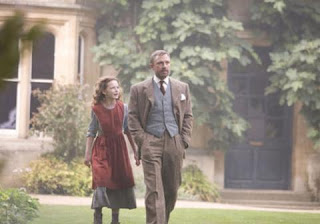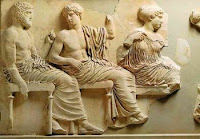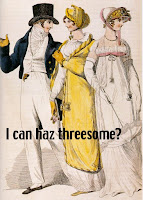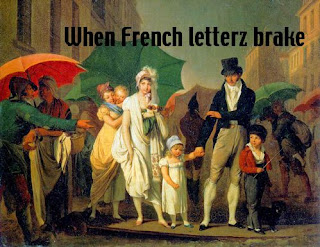 Playing with women’s fantasies is a delightful pastime for Rosenthal, who’s always looking for new ways to burn up the pages and keep your mind focused on characters and plot, not just her wonderfully erotic love scenes….an exhilarating adventure filled with untamed passion, intrigue and wild escapades in and out of bed. FOUR STARS — Kathe Robin, Romantic Times
Playing with women’s fantasies is a delightful pastime for Rosenthal, who’s always looking for new ways to burn up the pages and keep your mind focused on characters and plot, not just her wonderfully erotic love scenes….an exhilarating adventure filled with untamed passion, intrigue and wild escapades in and out of bed. FOUR STARS — Kathe Robin, Romantic Times
… supremely sensual, wickedly witty, and one of the… best to date [by an author] noted for exquisitely written, intelligent romances that often hover near the erotic edges of the genre… – Kristin Ramsdell, Library Journal
Today we welcome back to the Riskies Pam Rosenthal, who’s here to talk about her new book, The Edge of Impropriety. Your comment or question enter you into a contest for a signed copy of the book, so ask away.
RR: You call The Edge of Impropriety a novel of eros, esthetics, and empire–why? And what inspired it?
 PR: Well, the eros part is easy; I always write about sex and desire. But this time I got interested in the classical roots of these concepts, through a fascinating anthology called Erotikon: Essays of Eros, Ancient and Modern, and especially a poem within it, also called Erotikon, by Susan Mitchell. The poem’s about Cupid and Psyche, about the meeting of the human and the divine, and one of its long, prosy lines says:
PR: Well, the eros part is easy; I always write about sex and desire. But this time I got interested in the classical roots of these concepts, through a fascinating anthology called Erotikon: Essays of Eros, Ancient and Modern, and especially a poem within it, also called Erotikon, by Susan Mitchell. The poem’s about Cupid and Psyche, about the meeting of the human and the divine, and one of its long, prosy lines says:
…there aren’t enough tenses for all this to happen in, the past and the present fragmenting as they bop off one another…
Which is exactly what I believe: that sex doesn’t happen all in the same tense. There’s anticipation and retrospection; a sharpening, a blurring — even perhaps a blanking — of focus, and who knows in what order? Before, after, and during bop off each other (as Mitchell’s word) as though (in my words) in a hot pinball game.
Which is why I find rendering sex in language such a maddening, fun challenge, not to speak of a turnon — for me and hopefully for my readers.
Though here perhaps I might be frightening the horses. So back to the art and culture of the ancient world, the Greek and Roman empires…
 …about which I knew shamefully little when I started, necessitating a lot of reading and thinking (my husband and I both audited some college classics courses). And I also thought a lot about our Regency period, with its neo-Classical styles, fashionable ladies women in their pale muslins and aristocratic gentlemen with their large, imposing classical educations, confident in their shared self-image as heirs to the ancient empires. This was, after all, the period when Lord Elgin pried the marbles off the Parthenon and shipped them home to Britain.
…about which I knew shamefully little when I started, necessitating a lot of reading and thinking (my husband and I both audited some college classics courses). And I also thought a lot about our Regency period, with its neo-Classical styles, fashionable ladies women in their pale muslins and aristocratic gentlemen with their large, imposing classical educations, confident in their shared self-image as heirs to the ancient empires. This was, after all, the period when Lord Elgin pried the marbles off the Parthenon and shipped them home to Britain.
Ancient art in the service of rising empire; sex and power, elegance and erudition. I’d recently seen the Elgin Marbles for the first time, and the image that pulled it all together for me was of a scholarly gentleman and an elegant lady exchanging their first heated glances among all those beautiful blank white marble stares.
And the image remained with me into the book itself: Marina and Jasper meet cute among the marbles, in the British Museum.
RR: Your hero, Jasper Hedges, is one of those classically educated gentlemen you don’t entirely approve of. But your heroine is also pretty brainy.
PR: Yes, well, Marina Wyatt’s a writer of Society novels, called silver-fork novels at the time, these were witty, wordy, awfully popular fantasies of life among the haut ton, packaged for the eager consumption of the rising commercial and industrial middle classes, who couldn’t get into Almack’s except by reading about it. Really, these were the first Regency novels, written during the Regency itself — I find that whole self-reflexive thing, not to speak of the class comedy, quite fascinating.
 And in fact, Marina’s life story is a highly romanticized version of the life of Margaret, Countess of Blessington, the lady in the painting on the cover of my previous book, The Slightest Provocation. Margaret was a popular novelist and the widow of an earl. And she also gave literary parties, had a scandalous relationship with a famous young dandy and a nasty, hushed-up, early life in Ireland. But in EDGE I mix up all the details and give her a happy ending (not the young dandy, I should add, though he also appears in the book, highly transformed as well).
And in fact, Marina’s life story is a highly romanticized version of the life of Margaret, Countess of Blessington, the lady in the painting on the cover of my previous book, The Slightest Provocation. Margaret was a popular novelist and the widow of an earl. And she also gave literary parties, had a scandalous relationship with a famous young dandy and a nasty, hushed-up, early life in Ireland. But in EDGE I mix up all the details and give her a happy ending (not the young dandy, I should add, though he also appears in the book, highly transformed as well).
RR: Is Jasper also based on a historical figure?
 PR: No, not really. I patterned his upper-class prejudices (he initially resists taking money for writing) after Lord Byron; his opposition to the looting of Mediterranean art treasures also after Byron; his extensive Cambridge classical education after, of all people, the Reverend Patrick Bronte (father of Charlotte, Emily, Anne, and Branwell); his intellect after any number of guys I’ve been attracted to, including my own husband; and his love for his niece on my husband’s fantastic fathering skills. While as for his looks (a younger, hotter version of his looks, anyway), I drew inspiration, you might say, from this photo of Daniel Craig from the movie of The Golden Compass, especially the stance, the posture. All-in-all, I think that dreaming up Jasper Hedges might have been the most fun I’ve ever had creating a romantic hero, and I was gratified that one of the reviewers from DearAuthor.com — who gave EDGE an A! — called Jasper her favorite of my heroes. Pretty cool given that he’s 47 and sometimes feels his age. Oh, and he also owes a lot to Risky writer Janet Mullany’s Adam Ashworth in Dedication, so thanks are in order to Janet.
PR: No, not really. I patterned his upper-class prejudices (he initially resists taking money for writing) after Lord Byron; his opposition to the looting of Mediterranean art treasures also after Byron; his extensive Cambridge classical education after, of all people, the Reverend Patrick Bronte (father of Charlotte, Emily, Anne, and Branwell); his intellect after any number of guys I’ve been attracted to, including my own husband; and his love for his niece on my husband’s fantastic fathering skills. While as for his looks (a younger, hotter version of his looks, anyway), I drew inspiration, you might say, from this photo of Daniel Craig from the movie of The Golden Compass, especially the stance, the posture. All-in-all, I think that dreaming up Jasper Hedges might have been the most fun I’ve ever had creating a romantic hero, and I was gratified that one of the reviewers from DearAuthor.com — who gave EDGE an A! — called Jasper her favorite of my heroes. Pretty cool given that he’s 47 and sometimes feels his age. Oh, and he also owes a lot to Risky writer Janet Mullany’s Adam Ashworth in Dedication, so thanks are in order to Janet.
RR: Quite early on in the book Marina and Jasper have an understanding that their relationship will be only sexual, but emotional factors come into play, and so do Jasper’s family problems. Was this a hard sell, to have a hero who is guardian to an adolescent niece and deeply concerned with his family responsibilities?
PR: Not exactly a hard sell — because to be honest, I was already contracted and my editor wanted me to move along, given the glacial pace at which I work. But she also was rightfully and consistently concerned about how I was going to put an early adolescent into a book that had lots of hot sex. And in fact I gave the issue a lot of thought — as does Jasper, who makes it a point of honor never to stay the night with Marina, so he can always have breakfast with Sydney, the niece. Marina’s besotted lover, he observes rather grimly to himself, and Sydney’s quaint, straitlaced guardian might inhabit the same body, but they had very little to say to each other.
 And yet part of the reason Marina falls in love with Jasper is because of his devotion to Sydney. But what are the prospects for romance when each lover lives a life divided from itself? Or (as Marina puts it) into neat little compartments….Like those trays of insects and bits of bone and mineral in the British Museum.
And yet part of the reason Marina falls in love with Jasper is because of his devotion to Sydney. But what are the prospects for romance when each lover lives a life divided from itself? Or (as Marina puts it) into neat little compartments….Like those trays of insects and bits of bone and mineral in the British Museum.
In many ways these issues constitute the real questions and conflicts of The Edge of Impropriety. When you write a romance about young lovers, you can make them relatively free from responsibility and tantalizingly open to risk, experience, and transformation. But here I wanted to write about lovers who were tangled up in experience, in the pulls and stresses of memory and obligation — I worked hard to find physical metaphors for the way that life weaves us into its ongoing patterns. Marina and Jasper have been shaped and hurt by their separate lives and need to find their way home together. With a little help… but that would be giving things away.
RR: What’s next?
PR: Fan fiction. 😉 Well, sort of: I call it that to keep myself from getting too self-important. I’m at a very early stage right now, but my idea is to retell two classic English novels from the point of view of certain minor female characters I think the author gave the shaft to in the originals. I tell the “real” stories, of course, in a pair of sexy novellas. And no, I’m not telling which classic English novels.
Thanks so much for having me, Riskies.
 By far the most exciting event of my week so far was Monday morning in MacPherson Square in downtown Washington, DC. This is a very cleaned-up photo of what is a much-used square; it’s inhabited by ducks (although there is no source of water there), pigeons, and humans who, sadly, have nowhere else to live. (This is three blocks or so from the White House, to our nation’s shame.) On Monday, there was another visitor to the square, a red-tailed hawk who was breakfasting on a pigeon, about six feet away from an admiring crowd, who were gathered the other side of one of the fences erected to keep either the ducks or the homeless out (who respectively fly over or push them down).
By far the most exciting event of my week so far was Monday morning in MacPherson Square in downtown Washington, DC. This is a very cleaned-up photo of what is a much-used square; it’s inhabited by ducks (although there is no source of water there), pigeons, and humans who, sadly, have nowhere else to live. (This is three blocks or so from the White House, to our nation’s shame.) On Monday, there was another visitor to the square, a red-tailed hawk who was breakfasting on a pigeon, about six feet away from an admiring crowd, who were gathered the other side of one of the fences erected to keep either the ducks or the homeless out (who respectively fly over or push them down).
 Also in the neighborhood is one of Benjamin Henry Latrobe‘s masterpieces, the Decatur House Museum, which I visited recently. It’s a fabulous example of cutting-edge federal style, all clean lines and simplicity with very little ornamentation. I was particularly struck by the hallway and staircase–this is an artist’s impression of the hallway although I believe in Decatur’s time it would have been carpeted, not tiled. The original paint colors, an elegant pale blue-gray and yellow, have been restored, and one of the things I really loved is that the doorway itself is curved. It’s supposed to be one of the most haunted places in the US–one of the ghosts, of course, being Stephen Decatur himself who was killed in a duel.
Also in the neighborhood is one of Benjamin Henry Latrobe‘s masterpieces, the Decatur House Museum, which I visited recently. It’s a fabulous example of cutting-edge federal style, all clean lines and simplicity with very little ornamentation. I was particularly struck by the hallway and staircase–this is an artist’s impression of the hallway although I believe in Decatur’s time it would have been carpeted, not tiled. The original paint colors, an elegant pale blue-gray and yellow, have been restored, and one of the things I really loved is that the doorway itself is curved. It’s supposed to be one of the most haunted places in the US–one of the ghosts, of course, being Stephen Decatur himself who was killed in a duel.




























